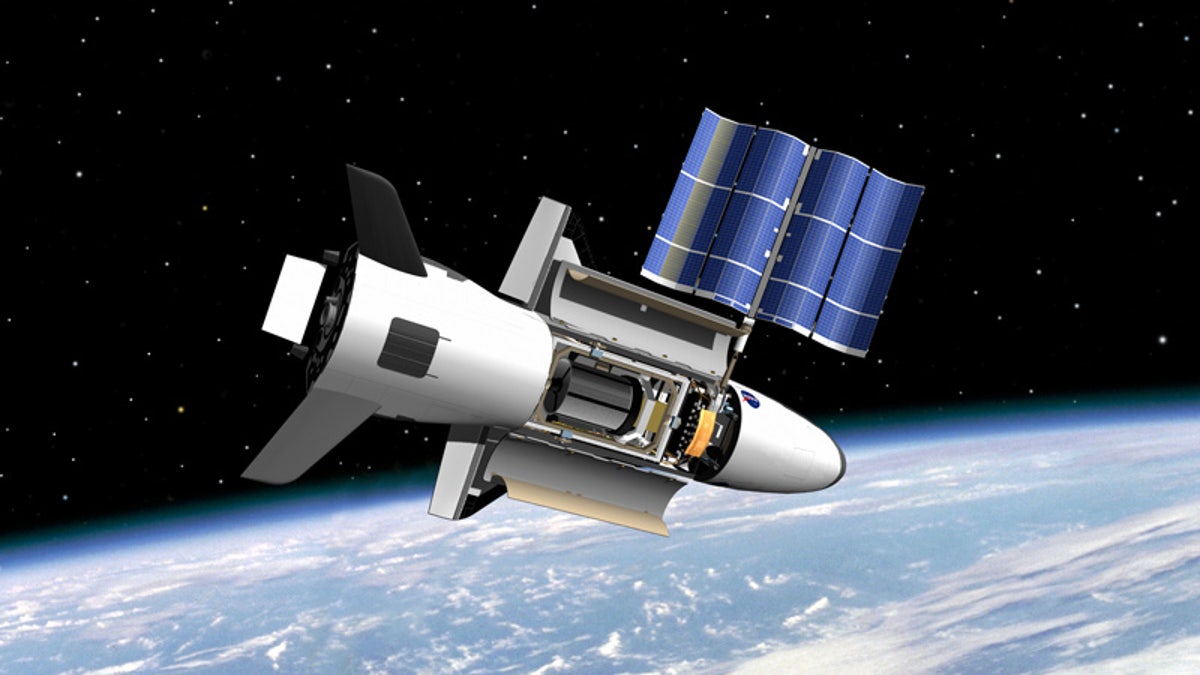
An artist's illustration of the U.S. Air Force's X-37B space plane in orbit.
The U.S. Air Force's X-37B military space plane has now been circling Earth for 700 days, just a few weeks shy of the vehicle's spaceflight-duration record.
The robotic X-37B launched on its fifth and latest mission, known as Orbital Test Vehicle 5 (OTV-5), on Sept. 7, 2017. And the reusable spacecraft, which looks like a miniature version of NASA's space shuttle, has been zipping around our planet ever since.
Exactly what the X-37B is doing up there remains a topic of much speculation; the solar-powered spacecraft's missions, and most of its payloads, remain classified. The Air Force tends to talk about the X-37B program in general terms, stressing that the space plane tests technologies for future reusable spacecraft and takes experiments up to space and back.
Related: The X-37B Space Plane: 6 Surprising Facts
We do know a few details about OTV-5, however. For example, Air Force officials have revealed that its payloads include the Advanced Structurally Embedded Thermal Spreader experiment (ASETS-II), which is measuring how oscillating heat pipes and certain electronics perform in the space environment.
The Air Force has at least two X-37B vehicles, both of which were built by Boeing. Each space plane is 29 feet (8.8 meters) long and 9.6 feet (2.9 m) tall, with a wingspan of almost 15 feet (4.6 m) and a payload bay the size of a pickup-truck bed. Like the space shuttle, the X-37B launches vertically and lands on a runway like a plane.
The first X-37B mission, OTV-1, launched in April 2010 and ended that December after 224 days in space. OTV-2 lasted from March 2011 through June 2012, racking up 468 days of orbital flight. The 675-day OTV-3 mission launched in December 2012 and landed in October 2014, and OTV-4 wrapped up in May 2017 after 718 days aloft.
As that litany indicates, each of the previous X-37B missions has lasted longer than its predecessors. So OTV-5 may well stay up for another 19 days, breaking the duration record set by OTV-4. We'll just have to wait and see.
- US Air Force's Secretive X-37B Space Plane (Infographic)
- In Photos: SpaceX Launches X-37B Space Plane, Lands Falcon 9 Rocket
- Gallery: Declassified US Spy Satellite Photos & Designs
Original article on Space.com.
